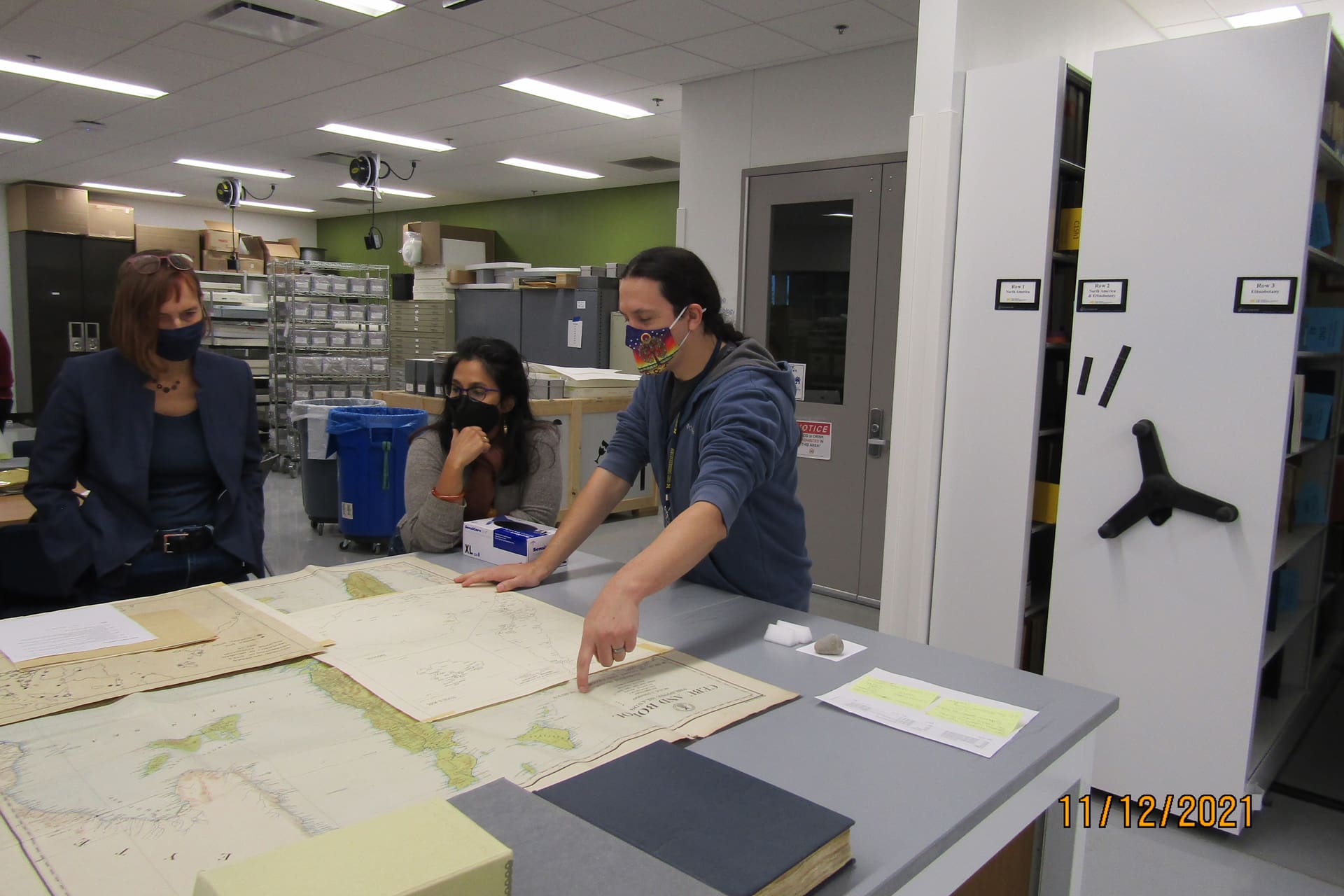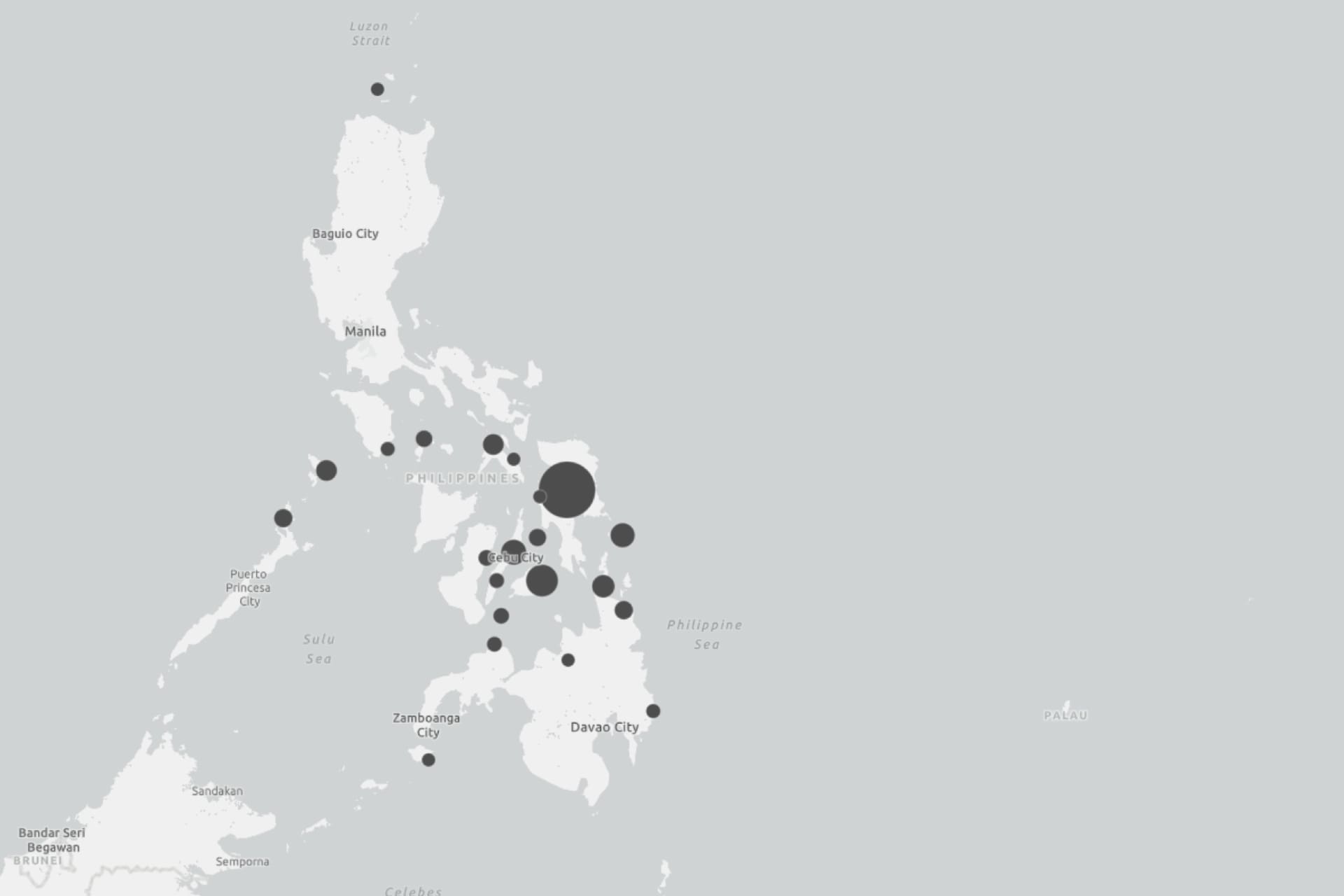The University of Michigan Museum of Anthropological Archaeology’s (UMMAA) largest and founding collection was collected between 1922 and 1925 when the University hired archaeologist Carl E. Guthe to conduct archaeological excavations in the Philippines.
The resulting collection contains archaeological material from over 400 mortuary sites, a small amount of archaeological material from non-mortuary sites, and additional ethnographic material. T Bones of ancestors were removed from 52 of the mortuary sites and sent to Ann Arbor.

PhD candidate in archaeology Nick Trudeau shows a selection of Philippine maps from UMMAA’s collection.
In 1872, prior to the creation of the Museum of Anthropological Archaeology, Joseph Beal Steere collected 16 human bones from Cebu while on a world-wide collecting trip that were given to the University Museum in 1876 as part of the Beal-Steere Collection (Rice A. Beal funded the expedition).
The total number of skeletal remains removed from the Philippines consist of approximately 500 individual skeletal elements and thousands of teeth, in varying states of preservation. Documentation and photographs from the Guthe Expedition can be accessed at UMMAA and the Bentley Historical Library.
Click here for more information about the University of Michigan’s collections in the Philippines.
Locations Where Human Remains from the Philippines were Removed by the
University of Michigan
Locations are mapped by the Arc-GIS software based on location names in the museum’s CollectiveAccess database, which is based on Guthe’s original field notes and inventories.
Descriptions are transcribed from the original Guthe Catalog entries. Each entry was assigned a unique field number (eg. B6-10) as well as a unique museum catalog number (eg. 18264). The clustered points represent the number of unique entries, which typically refer to multiple skeletal elements. To the best of our knowledge, this includes the vast majority of human remains curated by the Museum, but there may be a few records that have been inadvertently missed.

Map of the locations where human remains from the Philippines in University of Michigan’s collections were taken, University of Michigan Museum of Anthropological Archaeology
